Theodore Roosevelt National Park
After a chat with the owner at our dinner stop in Sidney, MT, we added a quick detour on our homeward trek. Since Teddy Roosevelt is forever linked with national parks and we had just spent six weeks in some of North America’s most beautiful ones, we couldn’t think of a more fitting ending to this road trip.
Click on the first photo in each group and scroll to see the square photos at full size.
To start at the beginning of this series, visit The Trip of Our Lives 2023.
A Twist of Fate
We got a pretty early start this morning, said goodbye to the gorgeous Waterton Park, AB and headed on down the road for our first of two nights on the road back to Wisconsin! After our pizza failed to arrive at our hotel room in Sidney, MT and a phone call confirmed that it wasn’t going to happen, we went in search of dinner.
The TapHouse Bar & Grill came to the rescue with awesome Philly Cheese Steaks. We talked to the owner and a bartender for quite a while and they suggested we make a stop at Theodore Roosevelt National Park, Our bartender also raved about Medora, ND – a nice little town with great salt water taffy.
A New Plan
We decided to skip Medora, but Roosevelt Park only took a minor adjustment to our route and only added a few miles. And since we had a shorter day planned to get to Fargo anyway, a couple more hours to see another national park seemed like a great plan!
On the way into the park we stopped at the Visitor Center and watched a fantastic movie about Teddy’s early years, the loss of his wife and mother on the same day, and how he found solace in the wilderness of North Dakota. We opted to drive the Northern Unit which was only 14-miles out and back, and save the 48-mile loop in the Southern Unit and the Elkhorn Ranch Unit for next time.
About Theodore Roosevelt
“Here in the North Dakota Badlands, where many of his personal concerns first gave rise to his later environmental efforts, Roosevelt is remembered with a national park that bears his name and honors the memory of this great conservationist. ~ READ MORE
The Antiquities Act
“The Antiquities Act was the first U.S. law to provide general legal protection of cultural and natural resources of historic or scientific interest on Federal lands. After a generation-long effort, President Theodore Roosevelt signed the Antiquities Act on June 8, 1906. The Antiquities Act set an important precedent by asserting a broad public interest in the preservation of these resources on Federal lands…
After signing it into law, President Roosevelt used the Antiquities Act eighteen times to establish national monuments. Those first monuments included what are now known as Grand Canyon National Park, Petrified Forest National Park, Chaco Culture National Historical Park, Lassen Volcanic National Park, Tumacacori National Historical Park, and Olympic National Park.
Since President Roosevelt, sixteen U.S. presidents have used the Act over 150 times to establish or expand national monuments…
The Antiquities Act has a proven track record of protecting significant Federal lands and the unique cultural and natural resources they possess. These monuments have become universally revered symbols of America’s beauty and legacy. Though some national monuments have been established amidst controversy, who among us today would dam the Grand Canyon, turn Muir Woods over to development, or deny the historic significance of Harriet Tubman’s struggle against slavery?
These sites are cherished landscapes that help to define the American spirit. They speak eloquently to the wisdom of retaining the Antiquities Act in its current form.” ~ READ MORE
And Here We Go!
Such a beautiful day for a drive with such great scenery! I can’t believe I had never heard of this park before. Of course we had never been to North Dakota before, and this time was only supposed to be a drive-thru to get back home. I’m glad we stumbled upon it, and we will definitely return to see the other sections of the park. Here is an overview video that offers a great introduction.
“Grasslands are the most abundant habitat type found in Theodore Roosevelt National Park. Grasses are able to cope with the low annual precipitation, going dormant as the relatively wet spring gives way to the dry, hot summer. At first glance, grasslands may appear monotonous, but, in fact, the grasslands encompass a rich and constantly changing diversity of plants and animals.” ~ READ MORE
Cannonball Concretions Pullout
These were so cool! The striations in the hillside almost look like sand as each of the cannonballs are exposed. The lighting was perfect for beautiful pictures of these weird formations of nature.
“The large, round rocks littering the ground and protruding from the butte are bizarre. They don’t seem to fit with the rest of the landscape. Where did they come from?
These “cannonballs” were not carried here by flowing water or glaciers. Instead, they formed within the sediment layers of the badlands. Now, erosion is slowly exposing these buried treasures.
Notice how some cannonballs have completely eroded out of the butte while others are just being exposed. Even more lie deep within the rock layers, yet to be revealed.” ~ from the sign below
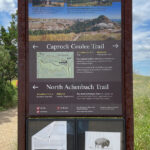 River Bend Overlook
River Bend Overlook
The View that Launched a Park
“There are many beautiful views in Theodore Roosevelt National Park, but perhaps none are better than the view from the shelter at River Bend Overlook. Built by the Civilian Conservation Corps circa 1937, this stone structure stands on the edge of a butte, providing a dramatic view of the Little Missouri River valley below. It also serves as a tangible example of the projects created by the CCC on the land that would eventually become Theodore Roosevelt National Park.” ~ READ MORE
Two other trails are indicated on the sign to the right, but there are plenty more where that came from at Hiking and Trail Information.
Wildlife at Last!
“During the Lewis & Clark Expedition, Meriwether Lewis wrote of “immense herds of buffalo, deer, elk, and antelopes” in modern North Dakota. By the end of the century, bison were nearly extinct.
If not for the foresight of a few individuals including Theodore Roosevelt, the American bison could have become extinct. Warnings and attempts to protect the bison came as early as 1776, but it was not until 1894 that the first federal legislation protecting these animals was enacted. Killing of bison became punishable by a $1000.00 fine or imprisonment, and the law was strictly enforced.
Prior to this legislation, a small herd did exist in Yellowstone National Park, but was not protected against poaching. There were also several small herds owned by private individuals. With passage of the bison protection law, game preserves were established that ensured their survival. Today, more than 500,000 bison live in North America under both public and private ownership.
In 1956, 29 bison were brought from Fort Niobrara National Wildlife Refuge in Nebraska and released in the South Unit of Theodore Roosevelt National Park. Here they roamed freely on 46,000 acres of park land and by 1962 the herd had increased to 145 animals. That year, 10 bulls and 10 cows were relocated to the 24,000-acre North Unit.
Though both units of the park can easily carry larger numbers of bison, park managers have currently set herd size at approximately 200 to 400 animals for the South Unit and 100 to 300 for the North Unit to maintain healthy range conditions.” ~ READ MORE
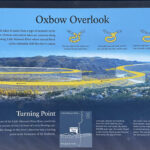 Oxbow Overlook
Oxbow Overlook
After a quick stop to check out the view and the pretty yellow (invasive) flowers, we arrived at our turn-around point. Oxbow Overlook was another amazing stop and my pictures do NOT do it justice.
The overlook has a great view of the Little Missouri River as it twists and turns through the valley below. A tributary of the Missouri River, the Little Missouri flows through all three units of this park. Click the link to see how this river meanders for 560 miles thru the Northern Great Plains.
“A spectacular scenic vista awaits your exploration at the end of the North Unit Scenic Drive. Explore interpretive waysides along a short accessible sidewalk and take in the views of the meandering Little Missouri River surrounded by tall cottonwood trees and impressive buttes.
Aptly named, Oxbow Overlook represents a type of meander that is occurring in the river. Oxbows and oxbow lakes are common along this free-flowing river where natural flood cycles constantly shift the river’s course. Be sure to look for wildlife amongst the surrounding buttes.” ~ READ MORE
“In Honor of a President. When Theodore Roosevelt came to Dakota Territory to hunt bison in 1883, he was a skinny, young, spectacled dude from New York. He could not have imagined how his adventure in this remote and unfamiliar place would forever alter the course of the nation. The rugged landscape and strenuous life that TR experienced here would help shape a conservation policy that we still benefit from today.” ~ READ MORE
Next up: TToOL Recap
Happy trails,
Barb

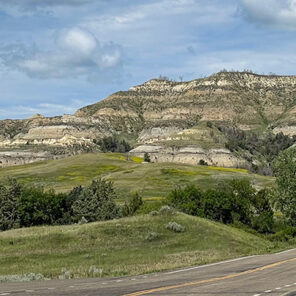
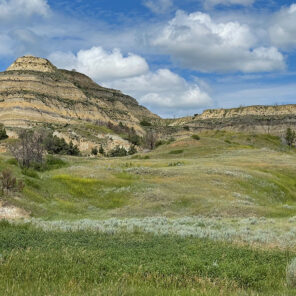
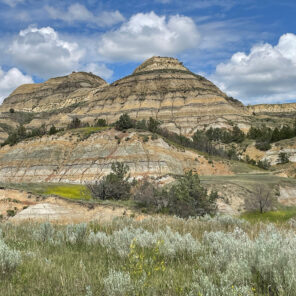

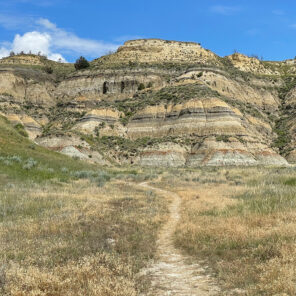

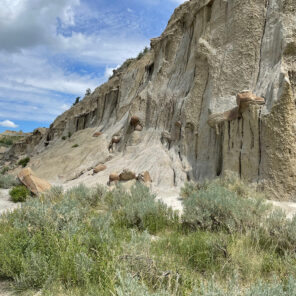
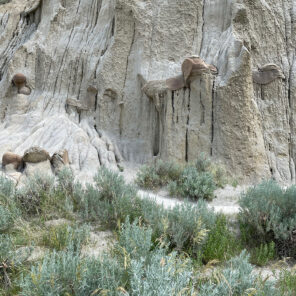
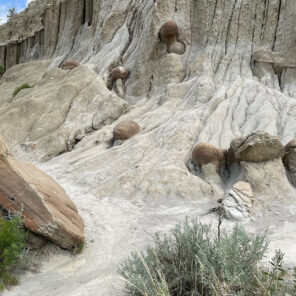

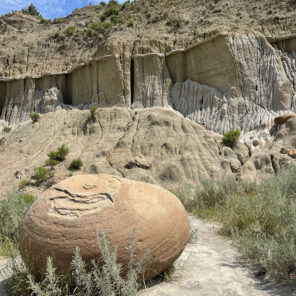


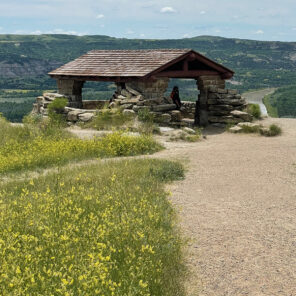

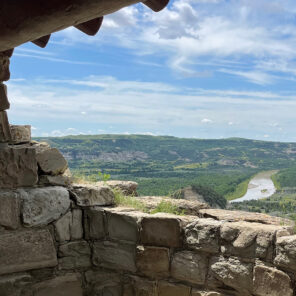
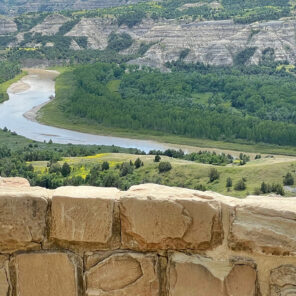
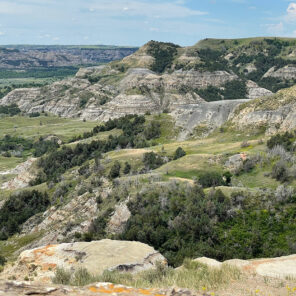
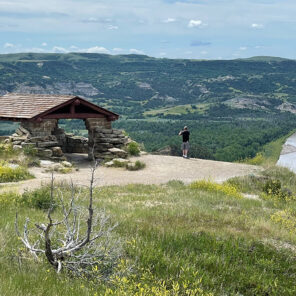

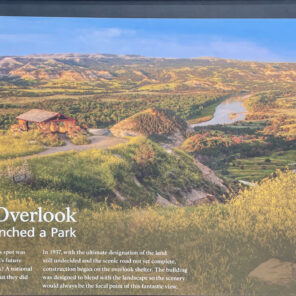
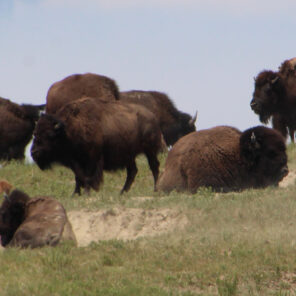


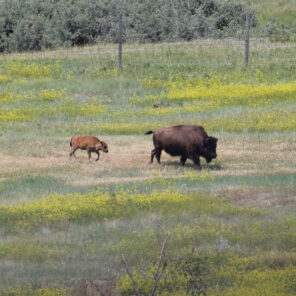
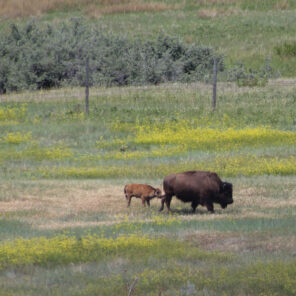
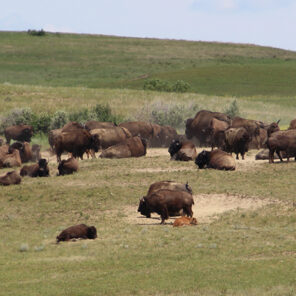
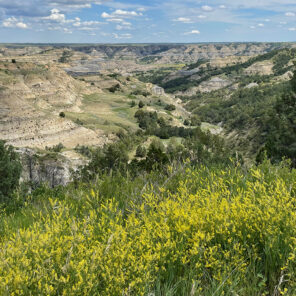
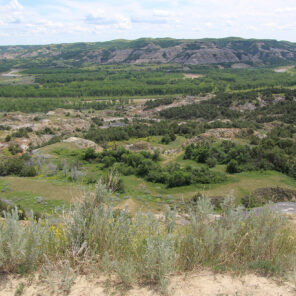
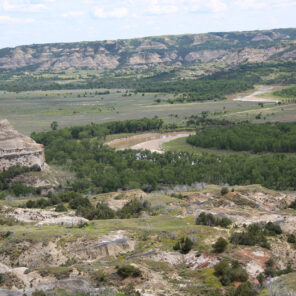

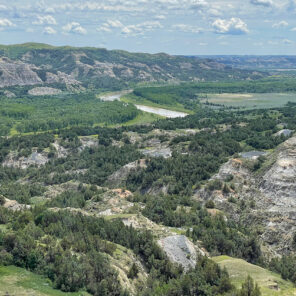
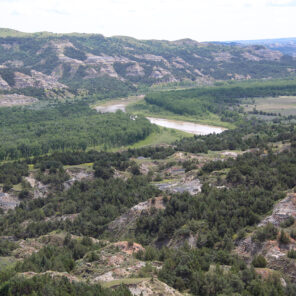






Comments are closed here.